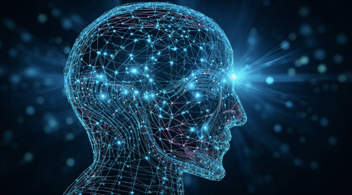How to Fine-tune a Large Language Model?
Discover how our fine-tuning services optimize Large Language Models (LLMs) like GPT, BERT, and T5 for your specific tasks. With tailored strategies and meticulous execution, we empower your projects with enhanced performance and adaptability.

Introduction
Fine-tuning a Large Language Model (LLM) is a crucial step towards unleashing its full potential. This guide aims to delve into the intricacies of fine-tuning LLMs, elucidating the process from its conceptual foundations to practical implementation using prominent frameworks.
Understanding Fine-Tuning
Fine-tuning entails retraining a pre-trained LLM on task-specific data, thereby enhancing its performance and adaptability to targeted tasks. This section outlines the fundamental steps involved:
-
Data Preparation: Curate or gather a dataset pertinent to the task or domain of interest, ensuring its diversity and adequacy.
-
Model Selection: Choose an appropriate pre-trained LLM as the base model for fine-tuning, such as GPT, BERT, or T5, based on task requirements and language understanding needs.
-
Fine-Tuning Strategy: Define key parameters like learning rate, batch size, and epochs to optimize the fine-tuning process, experimenting with various configurations for optimal results.
-
Evaluation Metrics: Establish relevant evaluation metrics, such as accuracy, precision, recall, and F1 score, to assess the fine-tuned model's performance effectively.
Related Read: Fine-Tuning GPT-3 for Industry-Specific Virtual Assistants
Technical Implementation
This section elucidates the technical aspects of fine-tuning an LLM using the Hugging Face Transformers library:
|
|
This code snippet illustrates the fine-tuning process of a pre-trained T5 model on the IMDb dataset using the Hugging Face Transformers library.
Gain a Competitive Edge with Fine-Tuning
90% of businesses believe AI gives them a competitive advantage. Stay ahead with fine-tuned LLMs from our expert team.
Our Services in Fine-Tuning LLMs
At Generative AI Development Company, we specialize in providing comprehensive solutions for fine-tuning Large Language Models tailored to your specific requirements. Leveraging our expertise and advanced methodologies, we assist you in:
-
Data Analysis and Preparation: Our team helps curate and preprocess datasets, ensuring their suitability for fine-tuning tasks.
-
Model Selection and Configuration: We guide you in selecting the most appropriate pre-trained LLM and fine-tuning strategies based on your project objectives.
-
Technical Implementation: Our experts proficiently handle the technical intricacies involved in fine-tuning LLMs, utilizing cutting-edge frameworks like Hugging Face Transformers.
-
Performance Evaluation and Optimization: We employ rigorous evaluation metrics and optimization techniques to ensure the fine-tuned model achieves superior performance.
Partnering with us empowers you to unlock the full potential of Large Language Model development, driving innovation and efficiency in your NLP endeavours.
Conclusion
Fine-tuning a Large Language Model emerges as a pivotal technique for tailoring pre-trained models to specific tasks or domains. By following the guidelines outlined in this guide and leveraging state-of-the-art frameworks like Hugging Face Transformers, developers can adeptly fine-tune LLMs, paving the way for customized solutions catering to diverse applications and use cases.


%201-1.webp)


.png?width=344&height=101&name=Mask%20group%20(5).png)

















